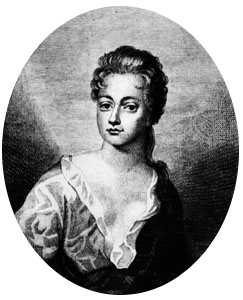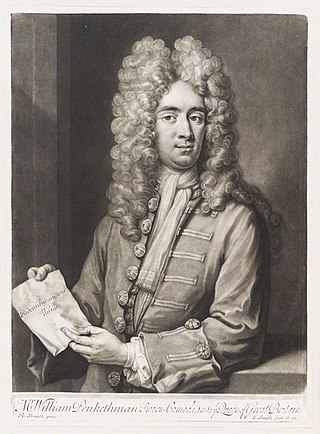Related Research Articles

Anne Oldfield was an English actress and one of the highest paid actresses of her time.
Susanna Verbruggen, aka Susanna Mountfort, was an English actress working in London.

Anne Bracegirdle was an English actress.
Mary Kent was an English actress, whose career lasted from 1692 to 1718. Her dates of birth and death are not known. She was the wife of Drury Lane actor Thomas Kent.

Robert Wilks was a British actor and theatrical manager who was one of the leading managers of Theatre Royal, Drury Lane in its heyday of the 1710s. He was, with Colley Cibber and Thomas Doggett, one of the "triumvirate" of actor-managers that was denounced by Alexander Pope and caricatured by William Hogarth as leaders of the decline in theatrical standards and degradation of the stage's literary tradition.

William Pinkethman was an English comic actor, a low comedian with a droll style, and theatre manager. He was considered an imitator of Anthony Leigh.
Margaret Saunders or Mrs Saunders was a British actress.
John Mills (c.1670–1736) was a British stage actor. A long-standing part of the Drury Lane company from 1695 until his death, he appeared in both comedies and tragedies. His wife Margaret Mills was an actress, and his son William Mills also became an actor at Drury Lane.
Thomas Simpson was an English stage actor of the late seventeenth and early eighteenth century. His surname is sometimes written as Sympson.
Mary Powell was an English stage actor of the seventeenth century and early eighteenth century.
Benjamin Husband was a British stage actor of the eighteenth century. His surname is sometimes written as Husbands.
Jane Rogers was an English stage actress. To distinguish her from her daughter she is sometimes referred to as Jane Rogers the Elder.
John Corey was an English stage actor and playwright of the eighteenth century. His name is sometime written as John Cory.
Joseph Williams was an English stage actor of the seventeenth and early eighteenth century.
Elizabeth Willis (c.1669-1739) was a British stage actress.
Mary Willis was a British stage actress of the eighteenth century.
Richard Cross was a British stage actor of the seventeenth and eighteenth century.
John Thurmond was a British stage actor. To distinguish him from his son, also an actor named John, he is sometimes called John Thurmond the Elder.
Abigail Lawson was an English stage actor of the seventeenth and early eighteenth century. She was a member of the United Company, making her first known appearance in The Marriage-Hater Matched by Thomas D'Urfey in 1692. From 1695 she was part of Thomas Betterton's breakaway company at the Lincoln's Inn Fields Theatre.
John Hodgson was an English stage actor of the late seventeenth century. He joined the United Company in 1688 and his first recorded appearance was in The Treacherous Brothers at Drury Lane in 1690. In 1695 he was one of several actors who broke away to join Thomas Betterton's new company at Lincoln's Inn Fields. His name is sometimes written as Hudson. He was married to the singer Mary Hodgson.
References
- ↑ Highfill, Burnim & Langhans p.217